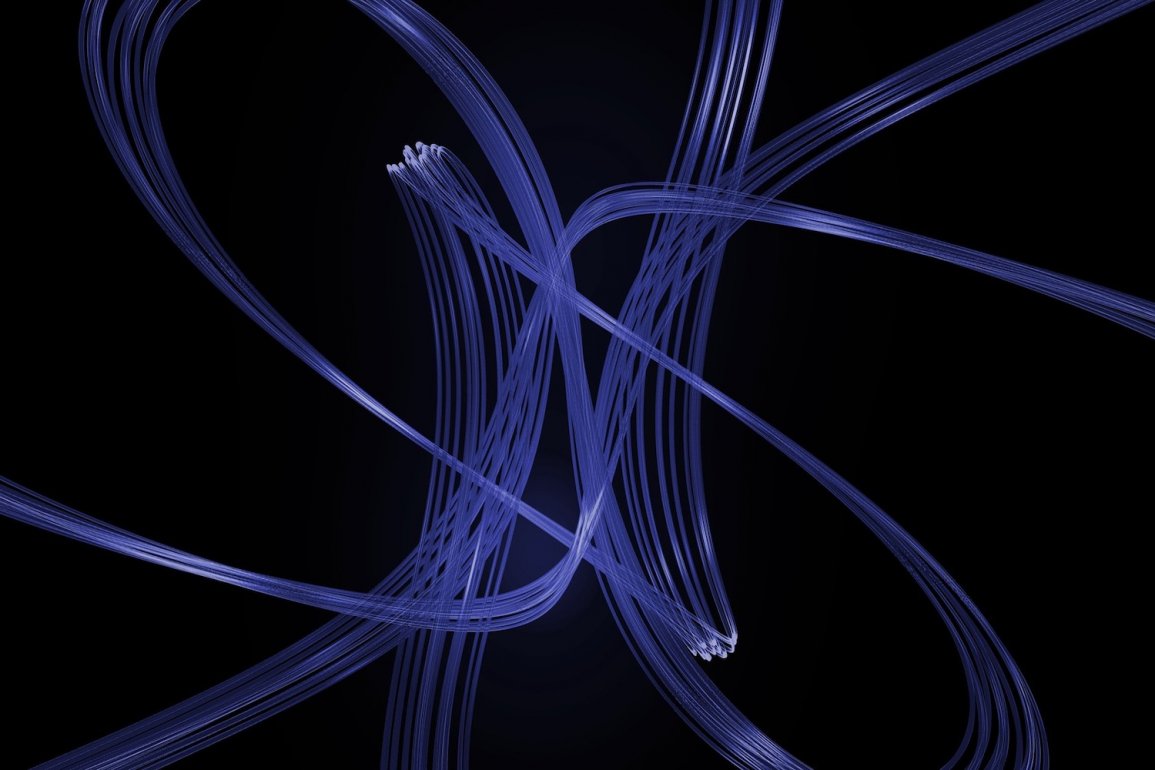Original version by Davi Gabriel da Silva published at targetteal.com updated for Enlivening Edge Magazine by Rodrigo Bastos
Our society has a vast and long experience in designing organizations using the chain of command as the starting point and basic structural element. Compare this reality with self-management. We are at its infancy. There is so much work to be done is this area and we as organization designers are thrilled with that prospect.
In simple terms we need to change the way we organize social systems so we can limit or prevent “power over” and boost “power with”. Those two concepts were proposed quite a long time ago, by a contemporary of Taylor, a woman named Mary Parker Follet. So it’s easier said than done.
The approach that we at Target Teal are following is composed of what we call “the art of working with agreements.” If we need a working environment that is free from coercion and at the same time functional and responsive, we need to be experts in these new social-art forms.
The best way to organize what we have been learning is through a social technology. So we have been developing a catalyst for self-management called Organic Organization or O2.
O2 is currently composed of a set of Meta-Agreements, and an ever-growing Pattern Library. The Meta-Agreements build the basis that the organization uses to construct agreements making explicit expectations, authority, and autonomy.
The Pattern Library is a compendium of practices that emerged to help organizations deal with a wide range of tensions and issues. These practices are compatible with O2’s Meta-Agreements and have been proven useful in the real world, but are not recipes and do not guarantee any success.
Roles and Circles
Like Holacracy and Sociocracy 3.0, O2 divides the organization into semi-autonomous circles. These circles contain roles that perform some specific activities and share a common purpose. In general, old areas, departments, and teams form circles. External and internal circles are connected through special roles, called Outer and Inner Links. We like to see the organization structure as a “map of agreements” that is in constant evolution.
A circle is a type of agreement that says something like this: people filling those roles inside this circle, will meet regularly and use (as needed) 5 different modes or ways of running a meeting.
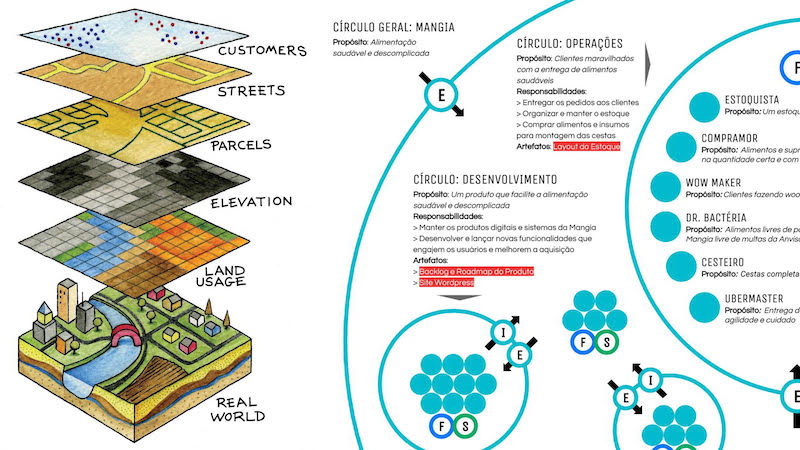 Five ways of running a circle meeting
Five ways of running a circle meeting
In our journey helping other teams and companies embrace self-organization, we have learned that it’s important to work on some “basic modes” to keep the group healthy in the long run. These modes aim to review the work, synchronize efforts, adapt the structure, select people who will maintain the process, and take care of the relationships among members.
Every meeting can have one or all five meeting modes. A facilitator chosen by the circle members decides on what mode is appropriate to better suit each circle’s present needs.
Review Mode of Meeting
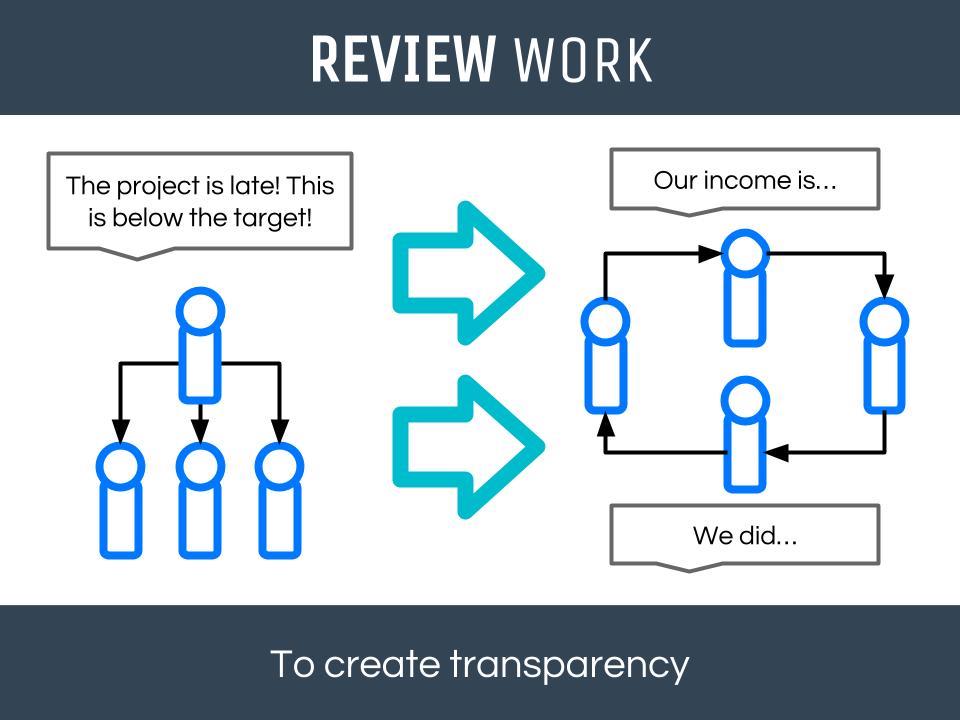 It’s amazing how many groups don’t gather to review their own work. Some do this individually or through revisions between boss and subordinate. But there is a better way.
It’s amazing how many groups don’t gather to review their own work. Some do this individually or through revisions between boss and subordinate. But there is a better way.
When we are immersed in an environment where others see what we are doing, an effect called peer pressure emerges. In this context, we are much more attentive to the expectations of colleagues and we do our best to meet them.
Research shows that this motivator is more powerful than money. Obviously, peer pressure creates “tensions” that make individuals in a group move towards the larger goal. The review mode helps to strengthen this environment.
It’s also common to hear managers complaining that their subordinates do nothing to improve the indicators. The problem is that you can’t worry about something you don’t see or can’t understand. It’s necessary to exercise the act of reviewing.
In O2, the way the review happens is defined by the facilitator. There are a number of patterns emerging that are been described in O2’s pattern library. The most common format is to check actions, projects, metrics, and checklists assigned to the roles in the circle.
Sync Mode of Meeting
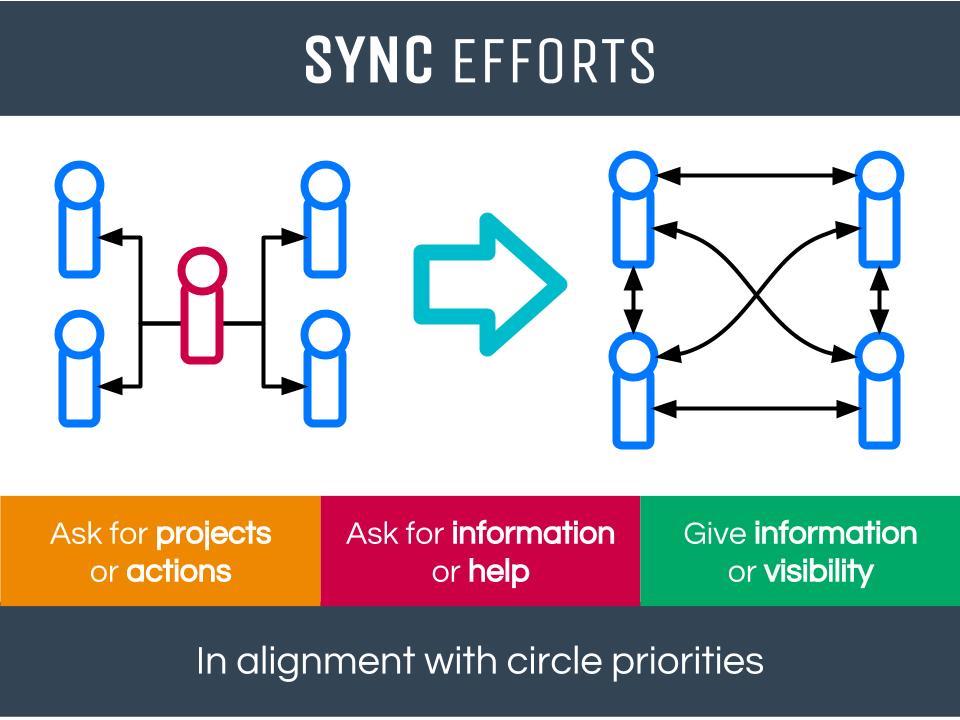 Many groups don’t develop effective mechanisms for making peer to peer requests. And things get worse when the leader/manager centralizes the monopoly of the distribution of tasks, that is, when a person only performs tasks passed directly by his superior. Needless to say, this isn’t effective at all.
Many groups don’t develop effective mechanisms for making peer to peer requests. And things get worse when the leader/manager centralizes the monopoly of the distribution of tasks, that is, when a person only performs tasks passed directly by his superior. Needless to say, this isn’t effective at all.
It’s not necessarily a matter of bad intention on the part of those who only do what the boss asks. Often the expectations, accountabilities and authorities aren’t clear. That is why in O2 all expectations have to be contracted through explicit roles.
Once you know what you can expect from your peers, it becomes easier to make requests. As with any organization, such requests for new projects, actions, or information may be made at any time by any person. But through the Sync Mode, we ensure that this occurs with a minimum frequency in each circle.
O2 seeks to decentralize the distribution of projects and actions, to give more agility to groups or organizations.
The sync mode starts with building a list of perceived tensions, which are issues/problems/opportunities that demand something. These tensions are then treated one by one and can processed into projects and actions that are assigned to the roles of the circle.
Adapt Mode Mode of Meeting
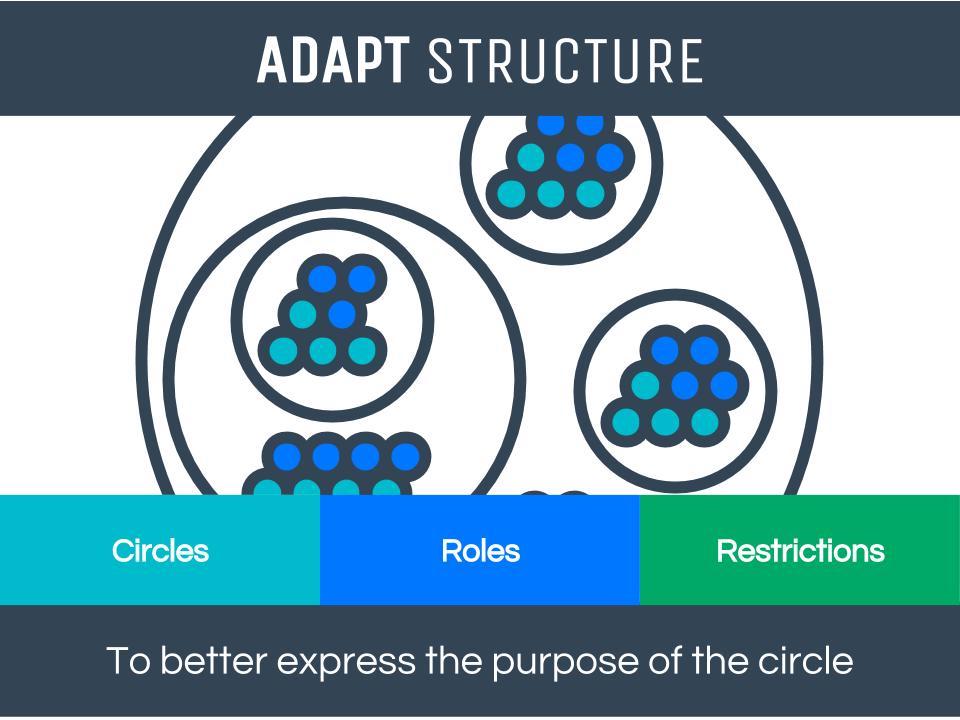 We always design our organizations and teams with great care. However, a designer, no matter how clever and dedicated, will never be able to predict everything that can happen (remember the VUCA world). The key is to create an evolutionary design, that is, a system with adaptability built in.
We always design our organizations and teams with great care. However, a designer, no matter how clever and dedicated, will never be able to predict everything that can happen (remember the VUCA world). The key is to create an evolutionary design, that is, a system with adaptability built in.
The O2 Meta-Agreements make use of this concept. Hence we use a structure composed of roles, circles, and restrictions (all are considered agreements) as a common language to make expectations, authority, and autonomy explicit . As new tensions and opportunities for improvement arise, the group adapts its structure to deal with the new context in which it is immersed.
All these changes happen exclusively in the Adapt Mode of each circle. At this point, groups can change roles, create inner circles, or set up restrictions that affect their members.
Explicit authority, that is, the clarity of what each member of the group “can” and “can’t” do allows for quick decision-making and less hesitation on a daily basis.
The process for making these changes ensures that they are made only in alignment with the purpose of the circle. For example, a person cannot change a role for his or her own benefit, without this contributing in any way to the purpose of the circle.
Select Mode of Meeting
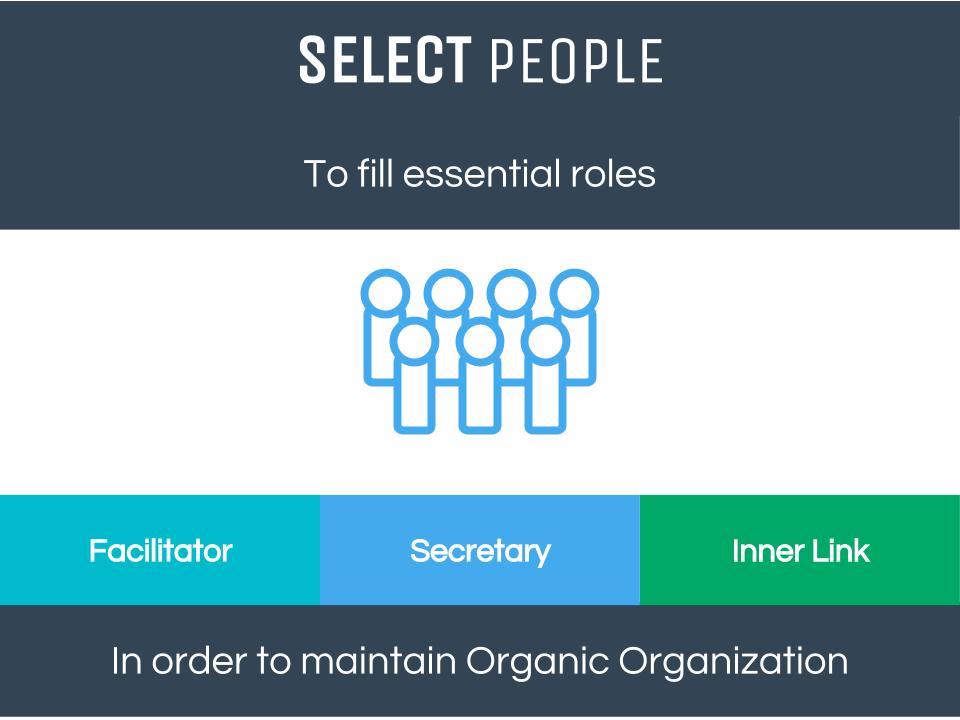 Keeping groups in self-organization requires energy. Each circle in O2 contains some basic roles that ensure the method works. Three of these roles are chosen by the group itself through an election in the select mode: facilitator, secretary, and internal link.
Keeping groups in self-organization requires energy. Each circle in O2 contains some basic roles that ensure the method works. Three of these roles are chosen by the group itself through an election in the select mode: facilitator, secretary, and internal link.
The group performs “selection” on a regular basis (every 3 months, for example). Rotations in these core roles are recommended to empower most people in O2 and ensure independence from facilitators or outside experts.
Care Mode of Meeting
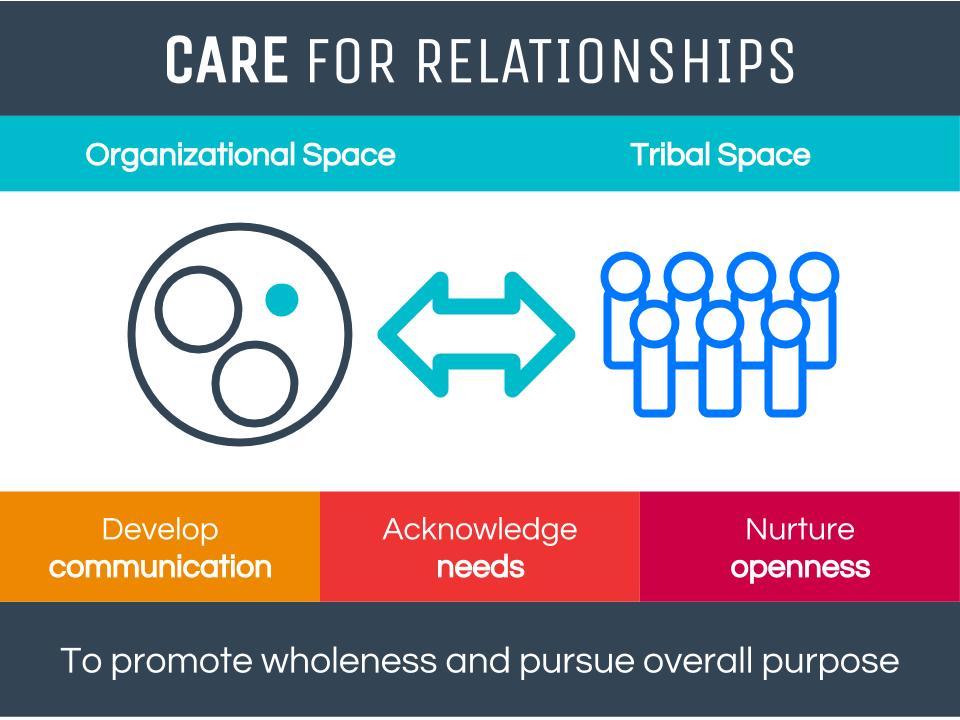 The traditional corporate environment doesn’t welcome people in their entirety as people. The emotions, the uncertainties, and the fears, you leave at home. At work you need to be a “good professional”.
The traditional corporate environment doesn’t welcome people in their entirety as people. The emotions, the uncertainties, and the fears, you leave at home. At work you need to be a “good professional”.
It turns out that in the 21st century work is predominantly creative (if yours is not, you might be replaced by a robot soon). And this type of activity, because it has greater interdependence between people and roles, requires more effective communication between agents. To navigate this complexity, you need to develop better relationships and emotional intelligence.
We understand that working the organizational space (structure, roles, restrictions, processes) isn’t enough for organizations. The Care Mode aims to develop communication, recognize individual needs and nurture openness among members, but without “polluting” the space of the organization.
There are patterns in our O2 library that help organizations and facilitators understand what strategies have been proven successful in dealing with the tribal space. But it is a very context-dependent choice; our job is to organize and spread different practices.
Helping with your journey
Every organization goes through a different journey and we as a society are at the beginning of a beautiful one of uncovering ways self-organizing work. The social technology O2 is our contribution to this effort. It is open-source and creative commons 4.0; there are no fees or certifications necessary.
If you are interested in learning more and contributing to spread and to evolve the art of working with agreements, please let’s chat. You can also find more info on O2 here.
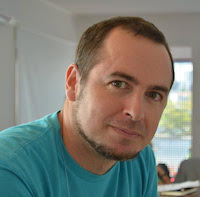 Rodrigo Bastos is a organizational designer and partner at Target Teal. He believes that working on social systems is a better strategy to promote change in organizations than focusing on individuals. Email him [email protected].
Rodrigo Bastos is a organizational designer and partner at Target Teal. He believes that working on social systems is a better strategy to promote change in organizations than focusing on individuals. Email him [email protected].
Featured Image/graphic link added by Enlivening Edge Magazine.
